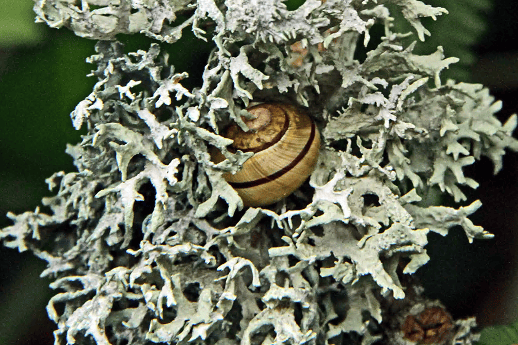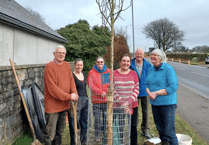THE hedgerows around the parish are looking autumnal now with the leaves of brambles taking on a rusty red look and the berries on the vines of black bryony looking like strings of red beads.
Looking at this plant with its heart- shaped green leaves and groups of tiny white flowers, it’s not obvious why this bryony is called black, but it’s because its fleshy roots are black.
However, the berries are poisonous and must not be touched and as the plant prefers well-drained soil it’s probably why it grows along the top of hedgerows where its usually out of reach.
Tutsan shrub berries have gone through their colour changes from green to red and now they are black, but still provide birds with food, although most are eaten when they are red.
Tutsan leaves were once wrapped around flesh wounds to help them heal, and in Normandy their name was Toute-heal, meaning ‘all heal’, from which the English name evolved.
Spindle trees have deep pink fruits that split open to show orange-coloured seeds.
For thousands of years, before spinning wheels were invented, wool to make garments was spun on a stick that was known as a spindle and the tree that provided these thin tools was so named.
Travelling gypsies also used the wood to make clothes pegs.
This small tree makes a beautiful addition to any large garden and is easy to grow from seed, and a bonus is when members of the Thrush family come to consume the seeds.
During the past month I have seen lots of small snails climbing up vegetation and leaves of bushes on the hedges.
Some, I have seen, have stuck themselves to the undersides of Foxglove and Harts tongue leaves and obviously, they have sought out a place where they can hibernate throughout the winter months.
However, I always thought that snails would only hibernate somewhere moist or damp but I noticed one snail that had found a nest in a bunch of lichen attached to a dead stick.
I can’t help noticing that Herb Robert flowers are abundant on hedgerows around the parish since May when they first appeared.
Their leaves also provide colour during autumn when they turn red as they die off.
A member of the geranium family, its name is probably derived from Robert, the Duke of Normandy many years ago.
One plant that always provides some interesting foliage on hedges and bank, usually where there is a bit of cover, is Yellow Archangel that appears now with bunches of green leaves covered in a white pattern.
Closely related to the red and white dead nettles, they have yellow flowers that appear during April.
To give us a reminder of something we get around Christmas, the Snowberry shrub is showing off its white berries in a couple of places in the village.
Although they may be abundant on the shrub, very few of the berries contain seeds.




